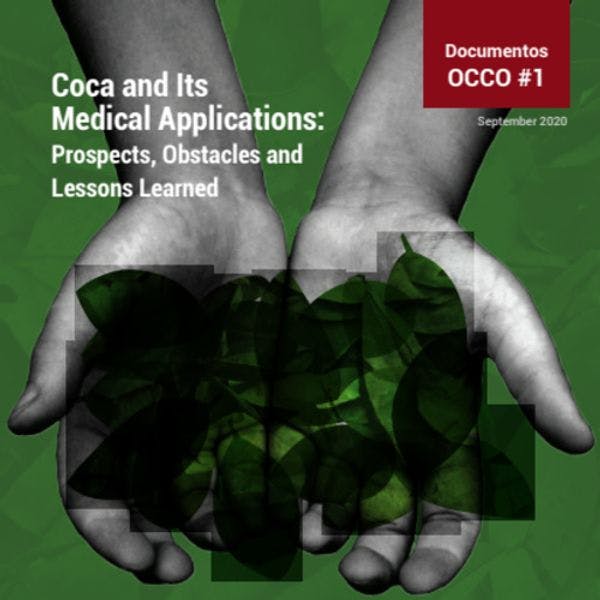OCCO - https://www.urosario.edu.co/Documentos/Facultad-de-Ciencia-Politica-Gobierno-y-Relacione/Observatorios/Crimen-organizado/DOCUMENTOS-_OCCO_1_Coca_and_its_Medical_Applicatio.pdf
Coca and its medical applications: Prospects, obstacles and lessons learned
By Ross Eventon, David Restrepo, and David Bewley-Taylor - The Colombian Observatory of Organized Crime
The industrialisation of the coca plant is still in its embryonic stages. In Bolivia and Peru the state has embraced the opportunity to allow for the creation of derivative products, and coca is used in tea, toothpastes, soft drinks, gels, bread and other alimentary products. In Colombia, however, such initiatives are sparse and restricted to individual licenses lacking formal regulatory recognition.
Increasing the availability of such products, based on the Bolivian or Peruvian models, would be a positive step, but the evidence suggests that the market for the present range of products is relatively limited. In this report we therefore aim to look further ahead than nutritional and agricultural uses. We will consider the lessons learned from the experiences of medical opium and cannabis, and the creation of regulated markets. And, based on the latest research, we explore the potential medical - or ‘phyto-therapeutic’ - applications of the coca plant.
Both opium and cannabis have established themselves in the medical field. Cannabis is prescribed by doctors as a means to alleviate pain and anxiety, and derivative products, such as CBD oil, can now be purchased legally in many countries. Under tightly controlled conditions, opium poppies are grown legally in a limited number of countries to supply the medical opiate market. Yet, beyond the limited use of cocaine in some medical settings, coca lags behind.
The coca plant and the opium poppy share many similarities. For millennia they have been used for medicinal, recreational, and ceremonial purposes. They have become entwined with politics. For example, when the Spanish conquistadors, aware of the appetite-suppressing and productivity-enhancing properties of the coca leaf, at first repressed and later, wherever the labour-intensive economy demanded it, encouraged its use among the indigenous population who worked as effective slaves in the New World. Or in 19th century Asia, when the British East India Company began smuggling opium from India into China, leading to a series of deadly wars. The famous derivatives of opium and coca, namely heroin and cocaine, were first isolated in the mid 19th century. Like opium, coca requires chemical processing to transform its endogenous alkaloid content (cocaine) into cocaine hydrochloride (the white powder) and other derivatives. Yet the coca leaf and the opium poppy have had entirely separate fates. Opium has been considered a panacea for medical ailments for around eight thousand years. It has been used recreationally by prominent, romantic figures in Western culture. And today it is impossible to imagine modern medicine without the anaesthetic properties of morphine. Illegal heroin, rather than the natural product of the opium poppy, is largely perceived to be the result of the manipulation of the plant for illicit purposes. Despite its equally longstanding cultural heritage in South America, coca, meanwhile, has been largely forgotten outside its original homeland: it has become synonymous only with cocaine, the more harmful ‘crack’, and all of their damaging connotations, including addiction, violence and widespread corruption. So ingrained is this connection that, in the international and local press, it is possible to read of the nonsense term “cocaine cultivation.”
Downloads
Topics
Regions
Related Profiles
- Global Drug Policy Observatory (GDPO)
